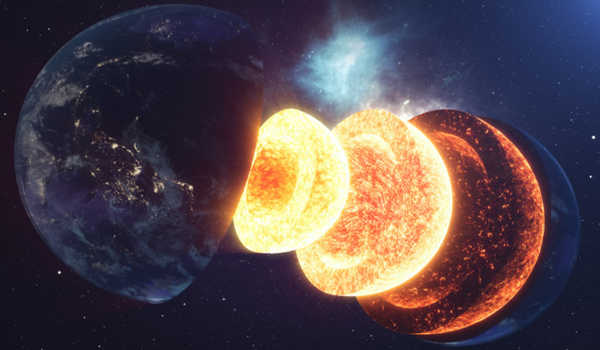Scientists have now established the existence of calcium silicate perovskite from the Earth’s lower mantle. The sample was brought forth by lodged in a diamond at a depth of at least 660 kilometers (410 miles) under our feet. The mineral known as davemaoite, and the discovery was published in the journal Science. The fourth most prevalent mineral on Earth, calcium silicate perovskite, is predicted to be beyond our immediate grasp. A prior putative finding (also in a diamond) in 2018 did not match the predicted qualities for the mineral.
The mineral can be manufactured in the lab using a laser to replicate extreme pressures, but once the pressure released, its cubic shape disintegrates; hence, it has never been seen in its natural state. This diamond, on the other hand, preserved it. In an audio briefing, the main author Dr. Oliver Tschauner of the University of Nevada, Las Vegas, said, “The finding is the culmination of decades of research, including the development and usage of microanalytical tools for detecting structures and compositions of micron-scale inclusions in diamonds.”
The latest research has now yielded results on the long-awaited mineral, revealing some of its most fascinating features. The team, in particular, demonstrates the critical role played by the extreme pressure under which it developed. The capacity to house a range of elements described in the study and is critical for our planet’s geology. The scientists noted in the report, “Structural and chemical investigation of the mineral indicated that it is possible to house a wide array of elements, similar to putting bulky things into a rubbish can.” “It has a lot of trapped potassium,” says the researcher.
Experiments had previously proven that such material may operate as a “trash can” for radioactive uranium and thorium. They are three important heat-producing elements, together with potassium. This shows that the quantity of davemaoite and its valuable storage leads to the generation of heat in the mantle’s deeper layers. This discovery raises the possibility that more minerals that only exist at high pressures will be discovered in the future. Davemaoite is the only high-pressure phase silicate mineral that has been discovered in nature. The only other one known is bridgmanite, which was discovered within a highly shocked meteorite.
Dr. Ho-Kwang (Dave) Mao, a Chinese-American experimental geophysicist who has contributed to high-pressure studies over the last five decades, is the mineral’s name.
The International Mineralogical Association’s Commission on New Minerals, Nomenclature, and Classification recognized the name davemaoite as a new natural mineral.















